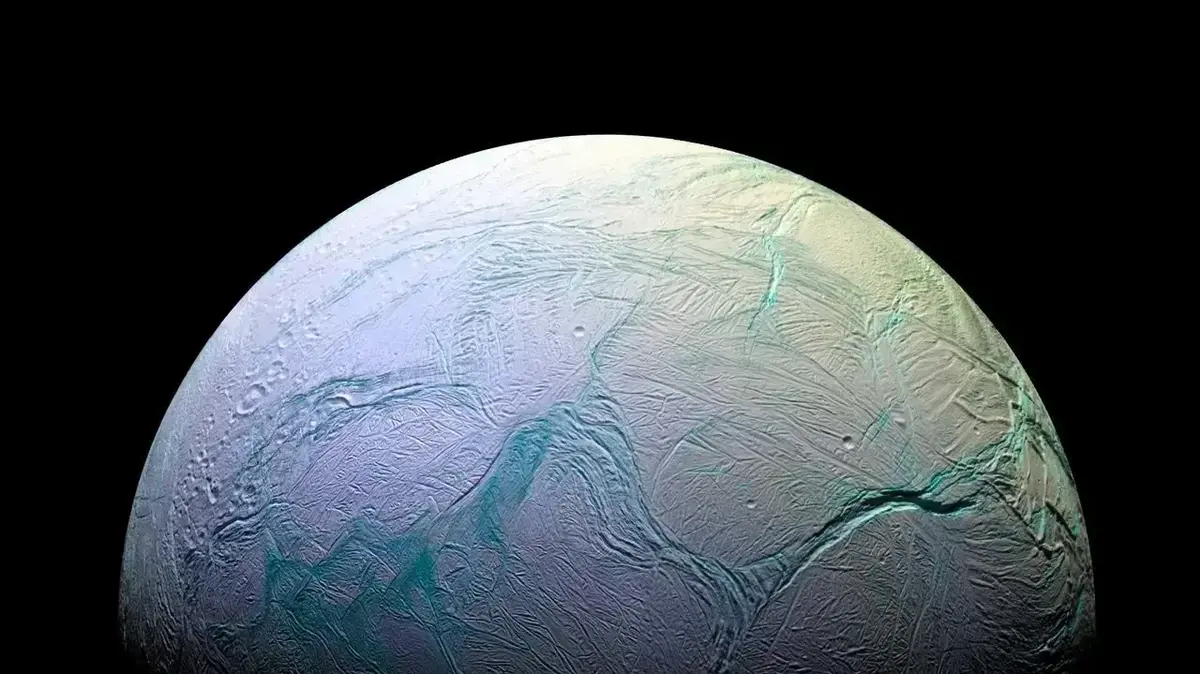Old data from NASA's Voyager 2 space probe show it: Four of Uranus' 27 moons are hiding a secret inside.
Pasadena - A research team from the US space agency Nasa has succeeded in gaining new insights into the moons of the planet Uranus with the help of data from the "Voyager 2" space probe. They are downright surprising: Apparently, four of the largest moons of Uranus could possibly harbor oceans beneath their surface.
Until now, scientists had assumed that only the largest moon, Titania, was the size necessary for liquid water. The research team found that other moons could also be large enough to hide deep oceans beneath their ice sheets. The oceans could be dozens of kilometers deep, according to NASA.
Nasa researchers discover oceans inside Uranus' moons
On a kind of "wish list" of US astronomy for the coming decade, a mission to the planet Uranus is classified as a priority. For this reason, researchers are currently concentrating on the ice giant in order to develop possible missions. The data from the "Voyager 2" spacecraft - the only spacecraft to date that has visited the planet Uranus - will also be used for this purpose.
The ice giant Uranus with its rings, imaged by the James Webb Space Telescope on February 6, 2023. NASA, ESA, CSA, STScI, J. © DePasquale (STScI)
The new study, published in the Journal of Geophysical Research, aims to shed light on how a future mission might explore Uranus' moons. What instruments would be needed, for example, to explore the possible subterranean oceans? However, the work also has implications beyond Uranus, believes the study's lead author, Julie Castillo-Rogez of NASA's Jet Propulsion Laboratory.
Numerous moons with oceans are already known in the solar system
"When it comes to small bodies — dwarf planets and moons — planetary scientists have already found evidence of oceans in several unlikely places, including the dwarf planets Ceres and Pluto and Saturn's moon Mimas," Castillo-Rogez explains. "So there are mechanisms at play that we don't fully understand. This work investigates what these might be and how they are relevant to the many bodies in the solar system that may be rich in water but have limited internal heat."
In addition to the "Voyager" data from the 1980s, Castillo-Rogez's research group also used Earth-based observations of the planet and its moons. In addition, data from other space probes were used, which have also discovered ocean worlds in the solar system. Findings about Saturn's moon Enceladus as well as the dwarf planet Pluto and its moon Charon were also incorporated into the work.
In the end, the researchers concluded that four out of 27 moons of Uranus are probably insulated enough to maintain an internal heat that makes liquid water under a layer of ice possible in the first place. In addition, the research group found that the rocky mantles of the moons emit a hot liquid that could also help keep an ocean warm. Especially for the moons Oberon and Titania, the researchers consider this scenario to be plausible. The oceans of these two moons could even be so warm that life could be possible in them, according to a NASA statement.
0
Also Read
Is the Earth orbited by a fragment of the Moon?
READ
Nasa team develops snake-shaped robot to explore the solar system
READ
Lunar eclipse today: If you don't look closely at full moon, you'll miss the celestial phenomenon
READ
How humans pollute the environment
READ
Surprising turn in space research: "We are relieved to have found the solution to this problem"
READ
Fancy a voyage of discovery?
My Area
Uranus' moons: Many questions remain unanswered
Many questions about the large moons of Uranus are still unanswered, and research is only approaching them gradually. For example, the study also showed that chlorides, as well as ammonia, are likely abundant in the oceans of Uranus' large moons and contribute to warmth. Such a finding may also be of interest for a future Uranus mission - one could think about specifically looking for the chlorides or ammonia. Castillo-Rogez is convinced that there is still a lot of work to be done: "We need to develop new models for different assumptions about the origin of the moons in order to facilitate planning for future observations."
This article, written by the editors, used machine support. The article was carefully reviewed by editor Tanja Banner before publication.








